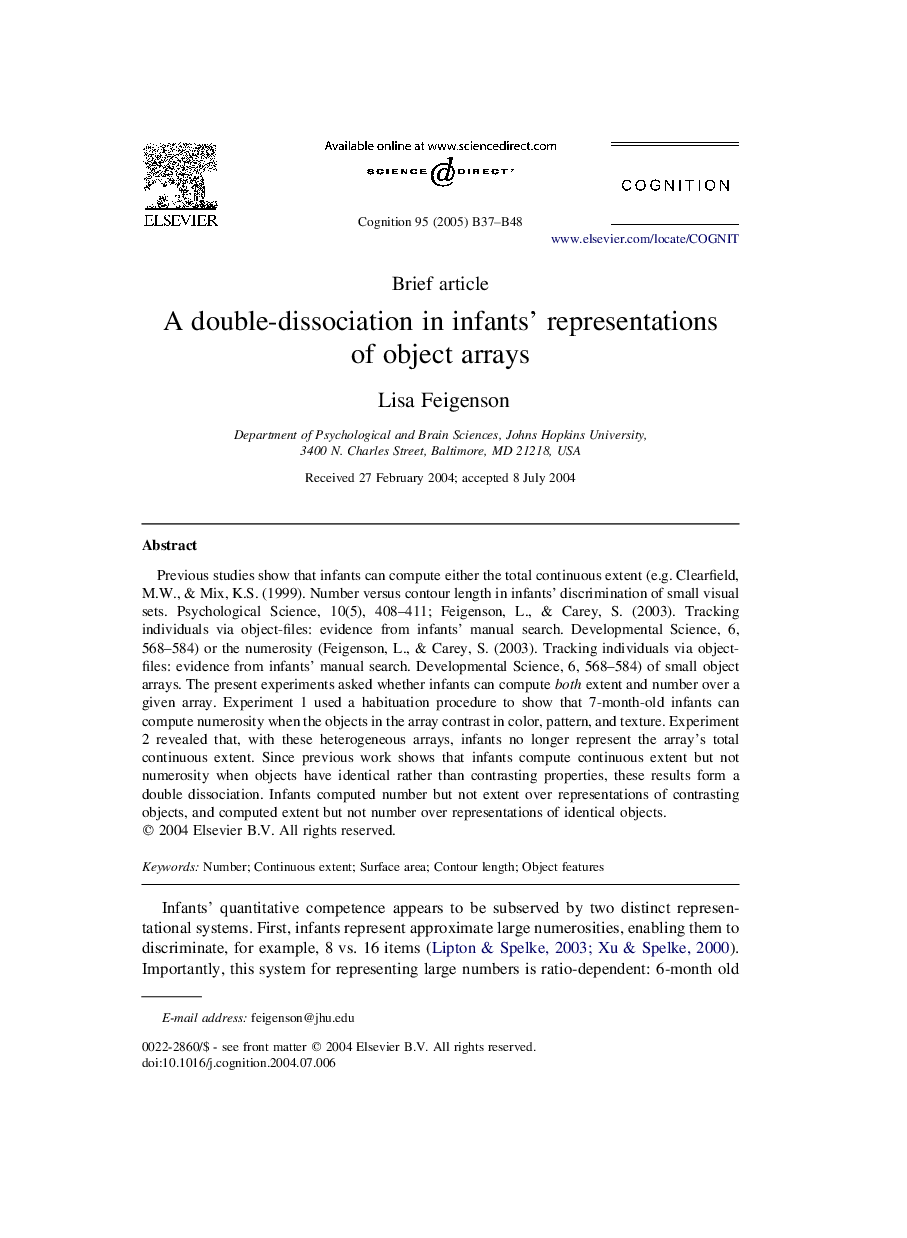| کد مقاله | کد نشریه | سال انتشار | مقاله انگلیسی | نسخه تمام متن |
|---|---|---|---|---|
| 10458145 | 921999 | 2005 | 12 صفحه PDF | دانلود رایگان |
عنوان انگلیسی مقاله ISI
A double-dissociation in infants' representations of object arrays
دانلود مقاله + سفارش ترجمه
دانلود مقاله ISI انگلیسی
رایگان برای ایرانیان
موضوعات مرتبط
علوم زیستی و بیوفناوری
علم عصب شناسی
علوم اعصاب شناختی
پیش نمایش صفحه اول مقاله

چکیده انگلیسی
Previous studies show that infants can compute either the total continuous extent (e.g. Clearfield, M.W., & Mix, K.S. (1999). Number versus contour length in infants' discrimination of small visual sets. Psychological Science, 10(5), 408-411; Feigenson, L., & Carey, S. (2003). Tracking individuals via object-files: evidence from infants' manual search. Developmental Science, 6, 568-584) or the numerosity (Feigenson, L., & Carey, S. (2003). Tracking individuals via object-files: evidence from infants' manual search. Developmental Science, 6, 568-584) of small object arrays. The present experiments asked whether infants can compute both extent and number over a given array. Experiment 1 used a habituation procedure to show that 7-month-old infants can compute numerosity when the objects in the array contrast in color, pattern, and texture. Experiment 2 revealed that, with these heterogeneous arrays, infants no longer represent the array's total continuous extent. Since previous work shows that infants compute continuous extent but not numerosity when objects have identical rather than contrasting properties, these results form a double dissociation. Infants computed number but not extent over representations of contrasting objects, and computed extent but not number over representations of identical objects.
ناشر
Database: Elsevier - ScienceDirect (ساینس دایرکت)
Journal: Cognition - Volume 95, Issue 3, April 2005, Pages B37-B48
Journal: Cognition - Volume 95, Issue 3, April 2005, Pages B37-B48
نویسندگان
Lisa Feigenson,